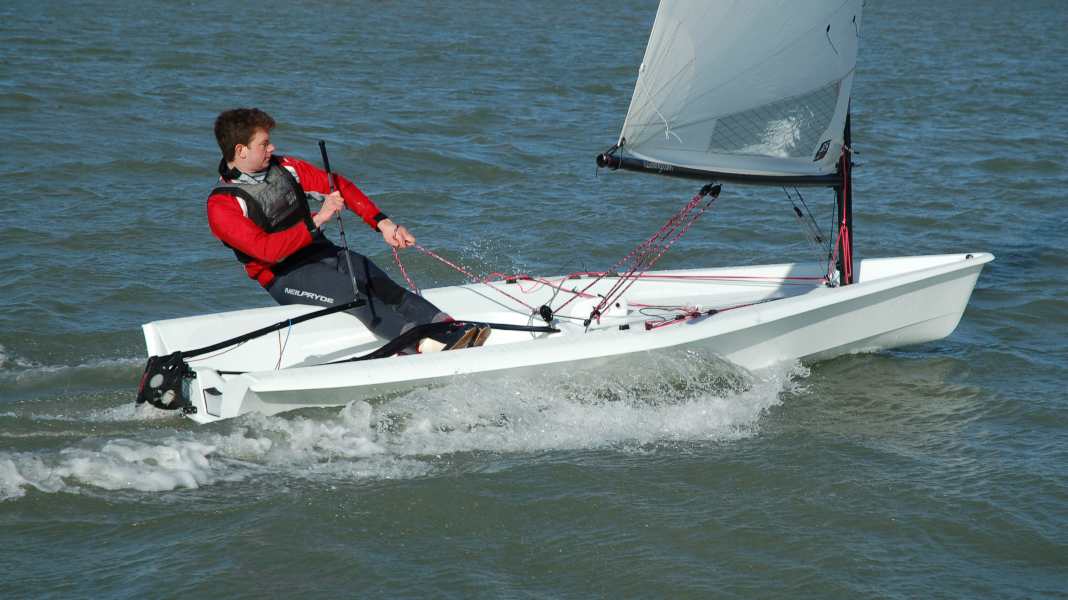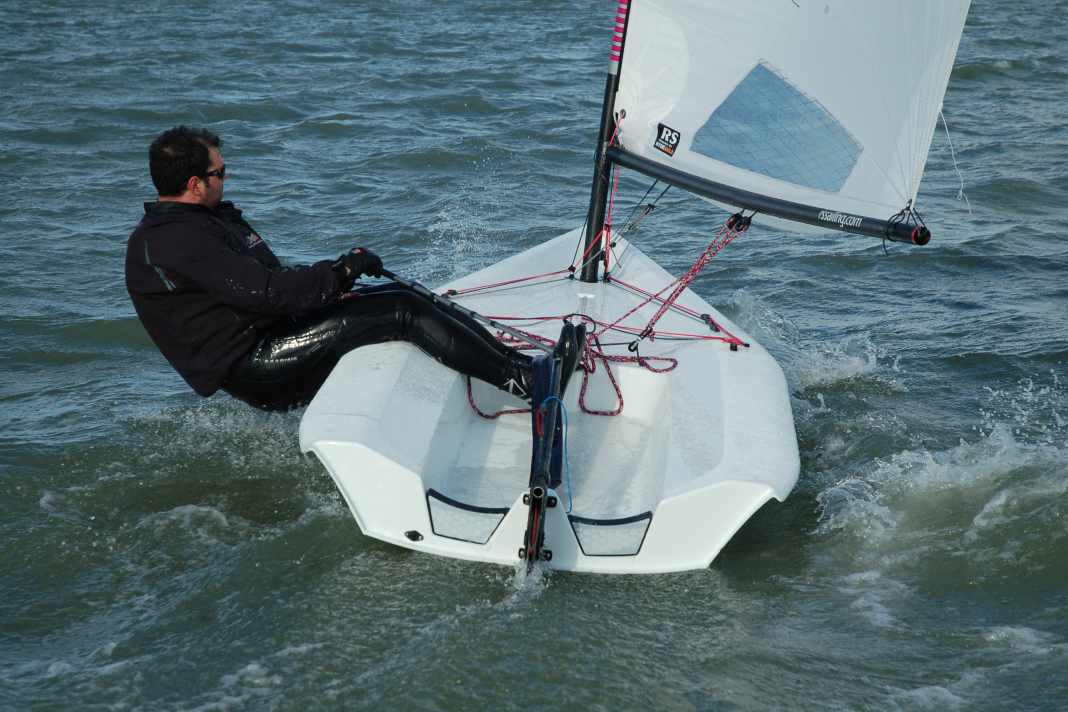
Visually, the Aero is the modern interpretation of the single-handed dinghy à la Laser: a more or less open hull shell with ergonomically moulded side decks, carbon mast and boom, almost open transom, slimmer foredeck. The design is based on the state of the art in dinghy construction, the relationship to the now large RS family is clear. Accordingly, RS announces the Aero as a "variant of the Laser for the 21st century", according to the press release.
The British innovation company doesn't really need such comparisons. On the island, it has been producing good fields with almost every new boat in a short space of time for years, so that regatta sailors there don't have to worry about having a new, hip boat but no competitors and only being able to compete against other boats in regattas for a fee.






In Germany, however, this has been much more difficult so far: sailors here are much more attached to their established classes and are less keen to experiment. It is of course unfair to compare a design from 1970 with a modern dinghy, but as the Laser is without question the most widespread single-handed dinghy in Germany, there are no other candidates.
However, a glance at the data sheet for the RS Aero suggests a very attractive boat: At 30 kilograms, it weighs just half as much as the Laser, which should be a great help, especially when transporting it on the roof of a car. Nevertheless, the RS has even more sail area (8.9 to 7.06 square metres), which should remain controllable even in windy conditions thanks to good trimming options. As with the Laser, there are smaller sail and rig variants with 7.4 and 5.2 square metres for lighter sailors and youngsters. The unstayed carbon mast can also be split, but the sail is set with sliders and halyard and not pulled over the mast as on the Laser. The trim lines are stored on both side decks with their own clamps and are therefore easy to reach while riding out on the cross; on the Laser they are positioned centrally in front of the centreboard.
A few other points show that the RS Aero was able to avoid some of the teething troubles that the Laser was never able to get rid of because it is a protected species, so to speak, as an Olympic standard class: At the base of the mast, a metal fitting protects the hull from damage and has a bilge opening; the stern has two huge bilge flaps, which should get rid of water faster than the Laser's mini-parts. The rudder blade and centreboard are much slimmer, longer profiles that show how knowledge in the field of flow research has improved over the last 45 years. Designer Jo Richards and RS spent four years developing the new Aero, testing four hull moulds and various rig and fitting options.
However, the sail will be made of Dacron, just like the Laser, because even unstayed carbon fibre profiles bend so much when all the trimming devices are pushed through that the material is not stretchy enough, according to RS.
The hull is a glass-foam-epoxy laminate, which has extra carbon fibre bracing in high-stress areas such as the mast base. At four metres, the boat is 23 centimetres shorter than the Laser, but according to the manufacturer, extra care was taken to ensure that there is enough buoyancy even for heavy sailors by designing the waterline accordingly.
The final question is how much the new state-of-the-art boat will cost compared to the Laser. RS has not yet given a final price, as the sports equipment is only now going into series production after the presentation of the last prototype at the Dinghy Boatshow in London. So far, it is only clear that, despite all the more expensive, modern components, the price is roughly "in the neighbourhood" of the Laser - the aim is to be better, not cheaper. However, interested parties will have to be patient: Production will not start until later this year, with sales expected to begin in January 2015.
The importer is the company Onsail in Hamburg. More information about the RS Aero on the RS website.

